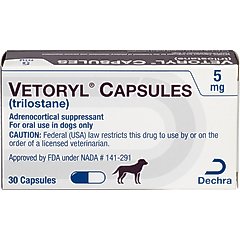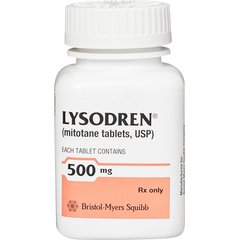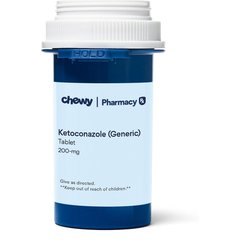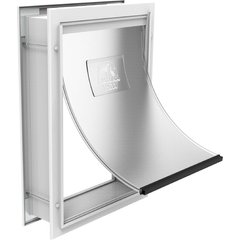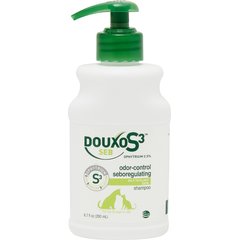What Is Cushing’s Disease in Dogs? How Is It Treated?
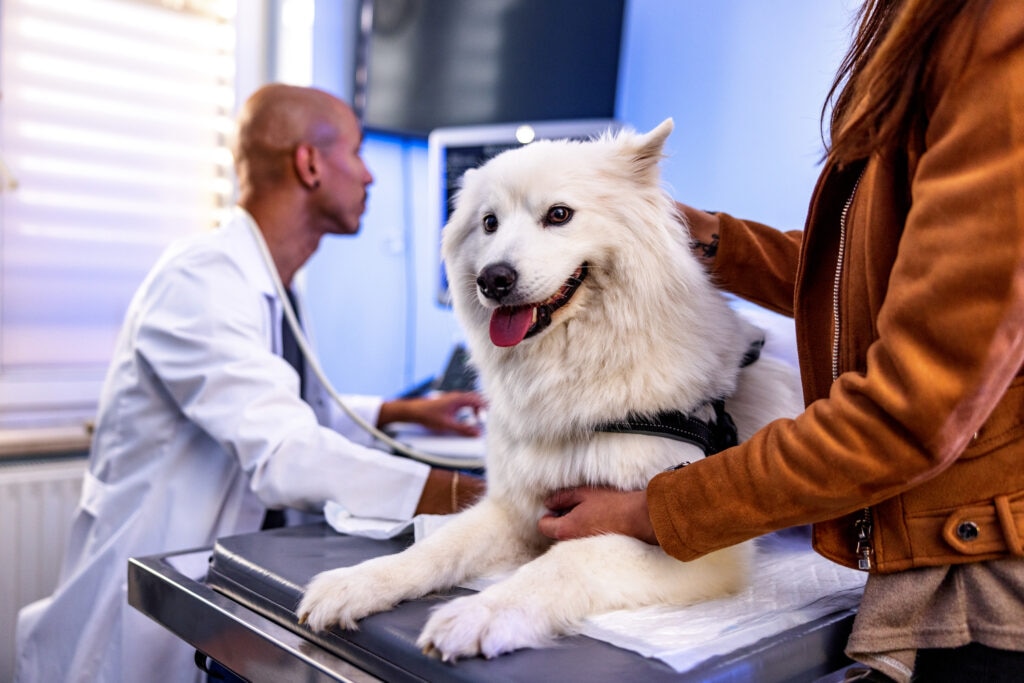
Photo by AzmanJaka/E+
Cushing’s disease in dogs (also called Cushing’s syndrome) occurs when there is too much cortisol in the body.
Cortisol is a natural steroid hormone involved in regulating many normal processes in the dog. A tumor on the pituitary or adrenal gland can make the body produce much more cortisol than needed.
When there is too much cortisol, affected dogs can experience changes in their appearance and behavior. Cushing’s is a chronic disease and is generally not considered a medical emergency.
Key Takeaways
- Cushing’s syndrome occurs when a dog has too much cortisol in their body.
- Dogs with Cushing’s disease usually have a tumor either on their pituitary gland or their adrenal gland.
- The most common sign of Cushing’s disease is increased thirst and urination.
- Cushing’s disease is more often managed than cured.
What Is Cushing’s Disease in Dogs?
Cushing’s disease in dogs occurs when there is too much of the stress hormone cortisol circulating in a dog’s body. The medical term for this condition is hyperadrenocorticism (HAC). To understand Cushing’s disease, it’s helpful to know how cortisol is produced in a normal dog.
In a healthy pup, a feedback loop exists between the pituitary gland—which is in the brain—and the adrenal glands, small beanlike organs that sit in front of the kidneys. Cortisol helps a dog’s body respond to stress, and it plays an important role in immune function, inflammation, metabolism, and maintaining blood pressure and blood sugar.
When cortisol levels are low, the pituitary gland signals the adrenal glands that it’s time to produce more cortisol and release it into the bloodstream. When cortisol levels are high, the pituitary gland reins back its signaling so the adrenal glands do not produce as much cortisol. This feedback loop helps regulate the appropriate amount of cortisol needed in a normal dog.
In a dog with Cushing’s syndrome, there’s too much cortisol circulating in the body and the feedback loop is unable to stop it. This occurs because there is a tumor on the pituitary gland, a tumor on the adrenal gland, or from chronic oral steroid administration.
While Cushing’s disease is not common in dogs, roughly 100,000 dogs are diagnosed each year. It’s more common in middle-aged or senior small-breed dogs, with females having a slightly higher incidence.
What Are the Signs of Cushing’s Disease in Dogs?
Signs of Cushing’s disease are very similar to the side effects of steroids.
Dogs with this condition often experience the following symptoms:
- Excessive thirst
- Increased urination
- Increased appetite
- Panting
- Potbellied appearance
- Skin/coat changes
- Lethargy
What Causes Cushing’s Disease in Dogs?
Cushing’s disease is caused by one of the following:
- A tumor on the pituitary gland
- A tumor on the adrenal gland
- Long-term steroid medication use
The most common cause of Cushing’s in dogs is a mass on the pituitary gland, with about 80–85% of affected dogs having pituitary-dependent HAC. The mass on the pituitary gland is usually small and results in an overstimulation of the adrenal gland. Fortunately, pituitary masses are generally benign (noncancerous).
Primary adrenal masses are less common, representing only 15–20% of dogs with Cushing’s disease. About half of adrenal masses are benign, while the other half are malignant (cancerous).
Dogs can also develop Cushing’s syndrome as a side effect to certain medications. When oral steroids are prescribed long term, some dogs may develop a Cushing’s-like syndrome called iatrogenic Cushing’s. The steroid medicine can mimic high cortisol levels, leading to symptoms of Cushing’s disease.
How Do Veterinarians Diagnose Cushing’s Disease in Dogs?
If your pup has signs of Cushing’s disease, your vet will typically start with blood work and urine testing to rule out other common diseases that can cause similar symptoms. Sometimes an additional urine test called a urine cortisol/creatinine ratio is done if Cushing’s is suspected by your vet. If the lab work also supports possible Cushing’s disease, specialty blood testing may be recommended to confirm the diagnosis.
There are several tests that can be helpful in diagnosing Cushing’s, including an ACTH stimulation test, a low-dose dexamethasone suppression test (LDDS), and a high-dose dexamethasone suppression test (HDDS). Selection of which test to use depends on the individual patient, the pet parent, and the veterinarian.
All these tests work by measuring the cortisol level in your dog’s blood before and after injections to stimulate the pituitary and/or adrenal glands. Your vet can go over which test is best for your pet.
Plan for your dog to stay at the clinic for several hours, as multiple blood samples are taken at timed intervals.
Imaging may be recommended, especially if an adrenal mass is suspected. Both X-rays and an abdominal ultrasound can be helpful before moving forward with treatment. If your dog has an adrenal tumor, referral to a veterinary oncologist may be recommended for a CT scan and surgical planning.
How Do Veterinarians Treat Cushing’s Disease in Dogs?
After a diagnosis, Cushing’s disease in dogs is treated either with medicine (most common) or with surgery.
It’s important to understand that for most affected pups, treatment is geared toward lessening the symptoms of Cushing’s. If your dog has test results that support a diagnosis of Cushing’s syndrome, but they aren’t excessively drinking, urinating, eating, etc., then treatment may not be needed. The goal of treatment is to make life better for you and your pet, not to cure the disease.
About 80–85% of dogs with Cushing’s disease have a benign mass on the pituitary that’s telling the adrenal glands to make too much cortisol. These pups are usually managed with medications that lower circulating cortisol.
The most prescribed medications to treat Cushing’s disease are trilostane (Vetoryl), mitotane (Lysodren), and ketoconazole. Many of these prescription medications require frequent monitoring once they’re started to ensure your pet is at a safe dose.
Recommended Products
While dogs with a pituitary tumor are usually maintained with medications, dogs with an adrenal mass may be surgical candidates. If your dog’s adrenal tumor is removed and it’s benign, surgery can be considered curative. If the adrenal tumor is malignant, surgery may simply buy your pup more time.
How Can I Help My Dog Feel More Comfortable?
Melatonin can help dogs with Cushing’s be less symptomatic, as it inhibits certain enzymes that can lower cortisol levels.
Recommended Product
Melatonin, while useful in some dogs, often requires at least four months before benefits are apparent, whereas prescription medications are much quicker to kick in.
It’s typically recommended that dogs under 30 pounds get 3 mg twice daily, while dogs 30 pounds and over get 6 mg twice daily.
Always talk to your veterinarian before starting any medication or supplements.
Xylitol (also called birch sugar), a sugar substitute, is very dangerous for dogs. Never buy sweet gummy supplements made for humans for your dog.
Dogs affected by Cushing’s disease often drink and urinate much more than other dogs. If you have a fenced-in yard, consider a dog door to reduce their chances of having accidents in the house.
Recommended Product
Many dogs are just as upset about having an accident in the house as their pet parent is. If a dog door is not an option, consider pee pads in case they can’t hold it until you’re able to get them outside.
Recommended Product
If your dog with Cushing’s has thin skin that’s prone to infections, consider a medicated shampoo to help keep them comfortable.
Recommended Product
Be sure to allow five to 10 minutes of contact time before rinsing.
How Do I Prevent Cushing’s Disease in My Dog?
Like many diseases, genetics play a role in whether a dog will develop Cushing’s disease.
With smaller-breed dogs being more likely to develop Cushing’s, there may be some breed predilection. Because of this, it’s difficult to prevent Cushing’s disease in your pet.
If your dog is prescribed steroids for another medical condition, close monitoring and frequent rechecks with your veterinarian for lab work can help reduce the risk of developing iatrogenic (steroid-induced) Cushing’s disease.
FAQs About Cushing’s Disease in Dogs
How long will a dog live with Cushing’s disease?
Life expectancy varies based on age at diagnosis, the type of Cushing’s disease, and whether the dog is treated. On average, most dogs will live an additional two to four years after being diagnosed with Cushing’s disease.
How does a dog get Cushing’s disease?
A dog develops Cushing’s disease by having a tumor on the pituitary or adrenal gland. Rarely, chronic steroid use can cause Cushing’s.
Is it worth treating a dog with Cushing’s disease?
Treatment is geared toward making your dog more comfortable. If your dog is drinking, eating, and urinating excessively, then treating them may improve their—and your—quality of life.
If they are not symptomatic for the disease, treatment often does not make sense. In minimally affected, asymptomatic dogs, many veterinarians recommend watchful waiting with regular rechecks.
What is the best thing to do for a dog with Cushing’s disease?
It depends on the situation. If you have a middle-aged dog with pituitary-dependent Cushing’s who has started drinking and peeing heavily and is having accidents in the house, medical treatment will likely help your pup and you.
If you have an advanced senior dog with an adrenal tumor, keeping them comfortable until they lose quality of life may be a better answer.
Attributions
Enid N. Behrend and R. J. Kemppainen, “Diagnosis of canine hyperadrenocorticism,” Veterinary Clinics of North America, 2001; 31:985–1003.
W. Brooks, “Cushing’s syndrome: Classifying the type,” Veterinary Information Network, 2024.
Etienne Cote, “Hyperadrenocorticism,” in Clinical Veterinary Advisor: Dogs and Cats, 2nd ed., 2011, pp. 548–551.
R. Hawkins, “What is Cushing’s disease?” Washington State University, College of Veterinary Medicine, 2020.
